Diedre Carmo
Automated computed tomography and magnetic resonance imaging segmentation using deep learning: a beginner's guide
Apr 12, 2023Abstract:Medical image segmentation is an increasingly popular area of research in medical imaging processing and analysis. However, many researchers who are new to the field struggle with basic concepts. This tutorial paper aims to provide an overview of the fundamental concepts of medical imaging, with a focus on Magnetic Resonance and Computerized Tomography. We will also discuss deep learning algorithms, tools, and frameworks used for segmentation tasks, and suggest best practices for method development and image analysis. Our tutorial includes sample tasks using public data, and accompanying code is available on GitHub (https://github.com/MICLab-Unicamp/Medical-ImagingTutorial). By sharing our insights gained from years of experience in the field and learning from relevant literature, we hope to assist researchers in overcoming the initial challenges they may encounter in this exciting and important area of research.
Open-source tool for Airway Segmentation in Computed Tomography using 2.5D Modified EfficientDet: Contribution to the ATM22 Challenge
Oct 03, 2022

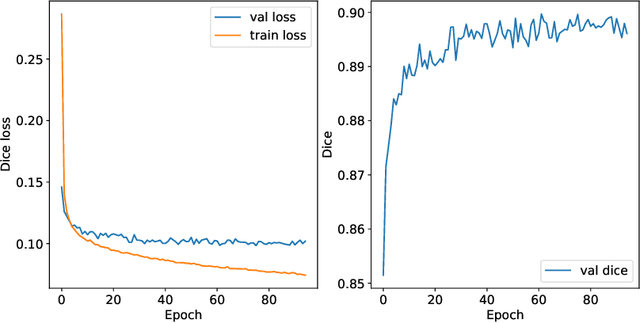

Abstract:Airway segmentation in computed tomography images can be used to analyze pulmonary diseases, however, manual segmentation is labor intensive and relies on expert knowledge. This manuscript details our contribution to MICCAI's 2022 Airway Tree Modelling challenge, a competition of fully automated methods for airway segmentation. We employed a previously developed deep learning architecture based on a modified EfficientDet (MEDSeg), training from scratch for binary airway segmentation using the provided annotations. Our method achieved 90.72 Dice in internal validation, 95.52 Dice on external validation, and 93.49 Dice in the final test phase, while not being specifically designed or tuned for airway segmentation. Open source code and a pip package for predictions with our model and trained weights are in https://github.com/MICLab-Unicamp/medseg.
PTT5: Pretraining and validating the T5 model on Brazilian Portuguese data
Aug 20, 2020



Abstract:In natural language processing (NLP), there is a need for more resources in Portuguese, since much of the data used in the state-of-the-art research is in other languages. In this paper, we pretrain a T5 model on the BrWac corpus, an extensive collection of web pages in Portuguese, and evaluate its performance against other Portuguese pretrained models and multilingual models on the sentence similarity and sentence entailment tasks. We show that our Portuguese pretrained models have significantly better performance over the original T5 models. Moreover, we showcase the positive impact of using a Portuguese vocabulary.
Hippocampus Segmentation on Epilepsy and Alzheimer's Disease Studies with Multiple Convolutional Neural Networks
Jan 14, 2020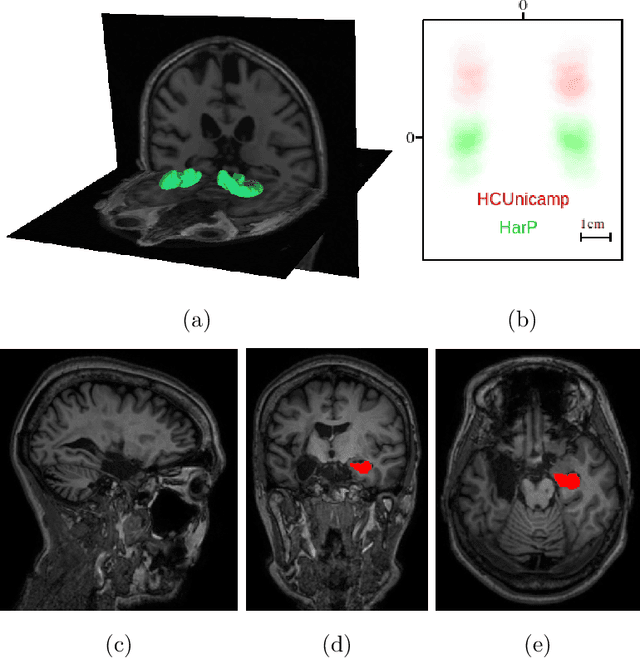

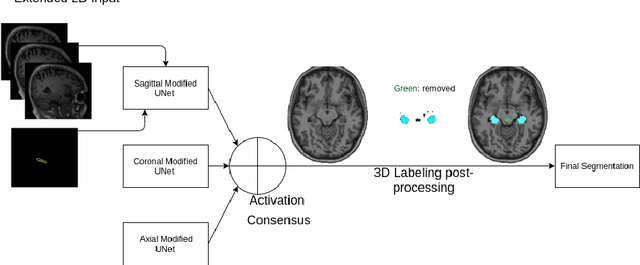
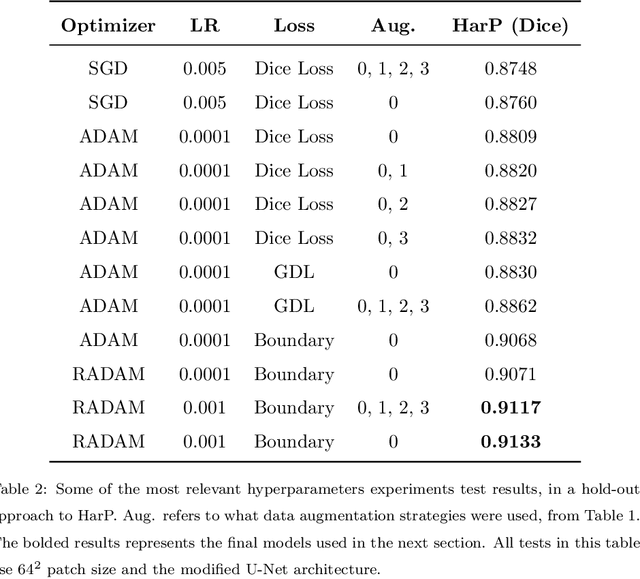
Abstract:Hippocampus segmentation on magnetic resonance imaging (MRI) is of key importance for the diagnosis, treatment decision and investigation of neuropsychiatric disorders. Automatic segmentation is a very active research field, with many recent models involving Deep Learning for such task. However, Deep Learning requires a training phase, which can introduce bias from the specific domain of the training dataset. Current state-of-the art methods train their methods on healthy or Alzheimer's disease patients from public datasets. This raises the question whether these methods are capable to recognize the Hippocampus on a very different domain. In this paper we present a state-of-the-art, open source, ready-to-use hippocampus segmentation methodology, using Deep Learning. We analyze this methodology alongside other recent Deep Learning methods, in two domains: the public HarP benchmark and an in-house Epilepsy patients dataset. Our internal dataset differs significantly from Alzheimer's and Healthy subjects scans. Some scans are from patients who have undergone hippocampal resection, due to surgical treatment of Epilepsy. We show that our method surpasses others from the literature in both the Alzheimer's and Epilepsy test datasets.
Extended 2D Volumetric Consensus Hippocampus Segmentation
Feb 12, 2019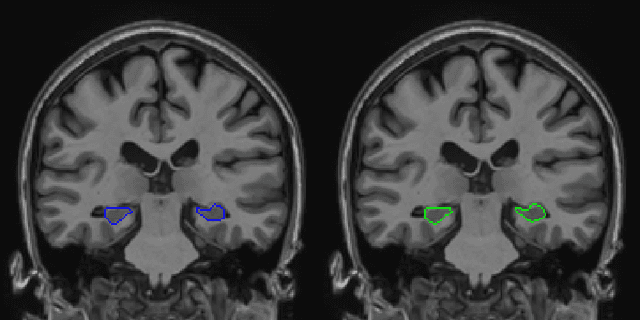


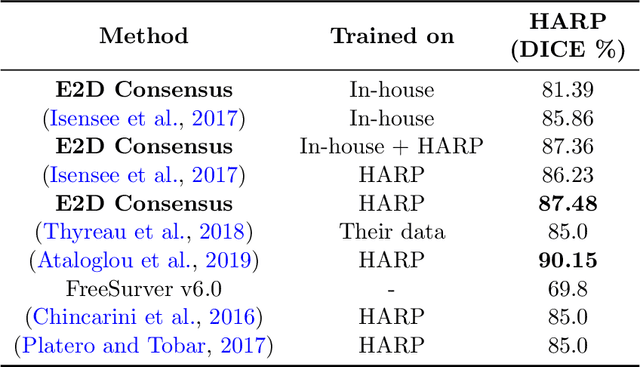
Abstract:Hippocampus segmentation plays a key role in diagnosing various brain disorders such as Alzheimer's disease, epilepsy, multiple sclerosis, cancer, depression and others. Nowadays, segmentation is still mainly performed manually by specialists. Segmentation done by experts is considered to be a gold-standard when evaluating automated methods, buts it is a time consuming and arduos task, requiring specialized personnel. In recent years, efforts have been made to achieve reliable automated segmentation. For years the best performing authomatic methods were multi atlas based with around 90\% Dice coefficient and very time consuming, but machine learning methods are recently rising with promising time and accuracy performance. A method for volumetric hippocampus segmentation is presented, based on the consensus of tri-planar U-Net inspired fully convolutional networks (FCNNs), with some modifications, including residual connections, VGG weight transfers, batch normalization and a patch extraction technique employing data from neighbor patches. A study on the impact of our modifications to the classical U-Net architecture was performed. Our method achieves cutting edge performance in our dataset, with around 96% volumetric Dice accuracy in our test data, and GPU execution time in the order of seconds per volume. Also, masks are shown to be similar to other recent state-of-the-art hippocampus segmentation methods.
 Add to Chrome
Add to Chrome Add to Firefox
Add to Firefox Add to Edge
Add to Edge